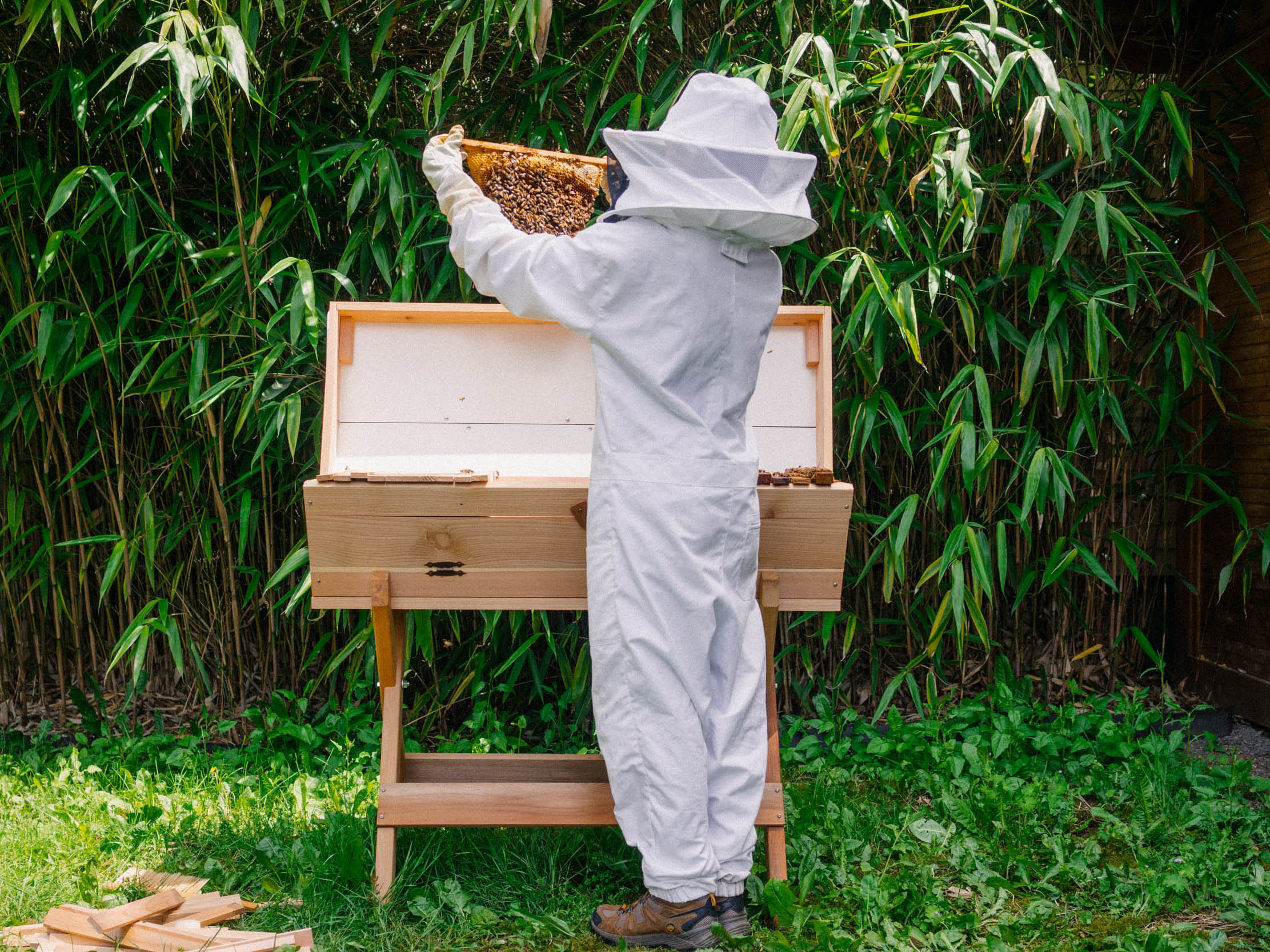Sure! Should you? Let’s find out. To start, there are two things that make small-space beekeeping possible.
- Non-foraging bee activity is usually contained close to the hive, (so you don’t have to worry about a yard full of bees), and...
- Bees, in general, are not aggressive - they’re defensive. Their sting response is reserved for times that they feel threatened, so if you are intruding on their hive territory (or if you accidentally sit on one), you might get stung. If you have a safe spot to put them and respect their space, it is entirely possible to peacefully cohabitate with honeybees! Check out more information on honey bee stings here.
With that in mind, here are a few important things to consider before jumping in:
Is it legal?
You’ll need to find out if beekeeping is permitted in your area. Here is a helpful walkthrough for navigating the legalities of beekeeping.
Is it safe?
Find out if there are any serious allergies in your household (and if you have neighbors nearby - ask them, too). Bees aren’t aggressive, but keeping a hive in close proximity will increase your chances of getting stung on occasion.
Are there sufficient resources?
Bees will forage up to three miles around their hives. While it is helpful to have pollinator plants in your yard, they will be visiting neighboring gardens, trees, and wildflowers for miles around your property. Urban environments are usually not lacking for good pollinator forage, but you’ll want to be sure there are flowers blooming in your area year round.
Do you have enough time?
Proper management is essential to keep your bees from becoming a nuisance in urban environments. You’ll need to ensure the hive is expanding with the colony to limit swarming, and requeen aggressive hives.
Do you have a good spot?
Honeybees are generally not aggressive, but it’s still smart to have them in a sunny, quiet area that’s removed from parts of the yard that are frequently inhabited by humans and pets. Placing the hive near a fence, wall or hedgerow can act as a visual barrier from jumpy neighbors and, if the entrance is facing a wall, it will push the bee flight path up and over human walkways. Here are some suggestions for proper hive placement!
If you can answer yes to all four questions, then check out our Getting Started series! We wholeheartedly recommend keeping honey bees - it is a fascinating and inspiring endeavor.
If you’ve decided that it sounds like fun but don’t have the appropriate space for it, you can consider looking for a hive host. Sometimes folks want to have bees on their property, but they don’t want to care for them. It can be an excellent trade-off.
If honeybees aren’t for you, but you still want to help - consider creating native bee habitats! There are 4,400 bee species in North America, and they are all important and deserving of our support. Mason and leafcutter bee habitats are easy to put together, and these bees are excellent pollinators and lot of fun to observe (plus, they're super gentle)! Also, planting bee-friendly flowers is easy to do, and will help support all of our pollinators.
